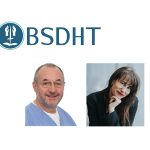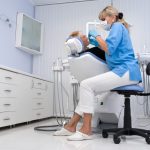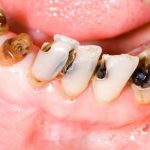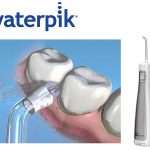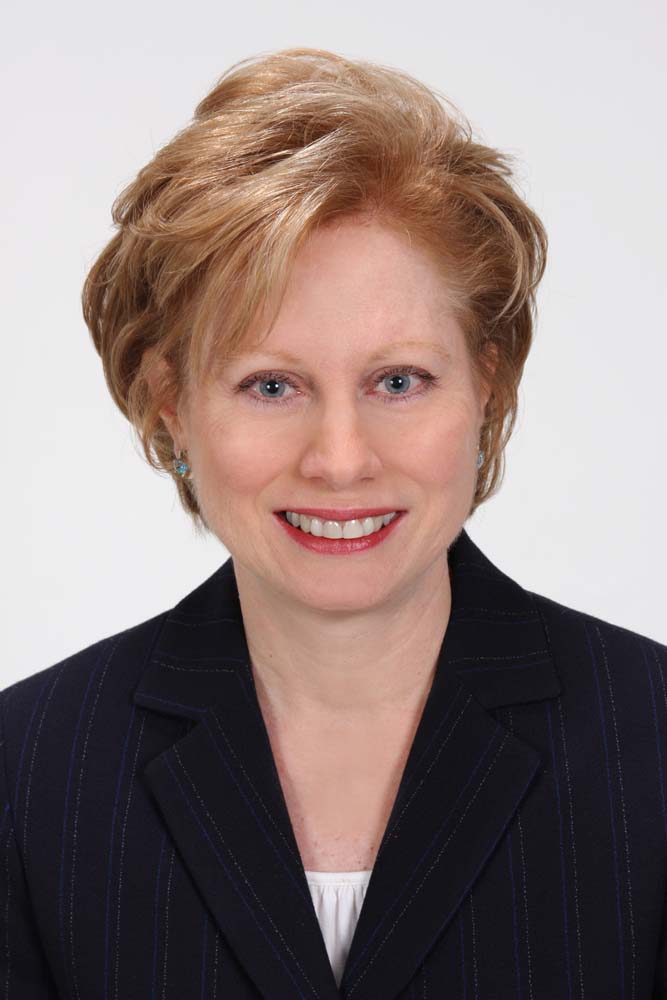
Orthodontic treatment is already common and demand is increasing markedly. Each year over 200,000 children and teenagers receive orthodontic treatment on the NHS.[i]Meanwhile demand among adults, while still a niche, continues to grow. Consciousness of, and aspiration to, higher aesthetic standards is almost certainly the key driver in adults seeking orthodontic treatment, leading to this demographic becoming the fastest growing segment in orthodontics.[ii] Consequently, greater awareness of the oral health impact of these procedures is valuable to orthodontists and dental practitioners in general.
The key benefits of orthodontics are well established at this point: proper alignment of teeth, better mastication, improved quality of speech, and aesthetic concerns. While there is some debate over the value of orthodontics in significantly improving oral health,[iii]post-treatment quality of life enhancements in regards to patient confidence and self-esteem are readily observable.[iv]
Gingival swelling and further periodontal complications, are reputedly the most common adverse effect of orthodontic treatment on oral health.vThough with adequate plaque control even teeth with reduced periodontal support can undergo successful tooth movement without adversely effecting their periodontal situation.[v]However, patients generally find that fixed appliances make cleaning their teeth more difficult.[vi]This is due to the additional surfaces and spaces that the appliance presents, which can trap food and lead to the accumulation of microorganisms and plaque on both the teeth and gingival tissue, as well as the brace itself. Additionally, the patient is required to clean from unfamiliar angles with greater thoroughness than they are used to, which presents something of a learning curve as well as being potentially uncomfortable. As a result of these factors, patients may engage in a suboptimal oral hygiene regime during orthodontic treatment.[vii]This can of course lead to the accumulation of plaque, a leading cause of gingivitis, which in turn can lead to periodontitis. Plaque coverage levels in orthodontic patients have been observed to be two to three times higher than in high plaque-forming adults without fixed appliances.[viii]Younger patients may be particularly at risk owing to a less conscientious approach to their oral hygiene,[ix]so it may prove wise to impress upon them and their caregivers the importance of due diligence.
Root resorption is another common negative consequence of orthodontic treatment. While not the cause, orthodontic treatment can trigger severe external apical root resorption (ARR), which can result in permanent loss of tooth structure from the root apex.[x]Key risk factors for root resorption are the length of treatment, impacted canines, thin and dilacerated roots, or a history of anterior tooth trauma. Habitual behaviours such as occlusal trauma, thumb sucking and chronic bruxism are further risk factors, and so should be checked for prior to treatment.[xi]Evidence suggests that light forces are preferable to heavy in reducing the incidence and severity of root resorption.[xii]
Adult orthodontic patients present additional challenges uncommon in younger patients. These include: uneven gingival margins, missing papillae and periodontal bone loss.iiWhen present, these can and should be treated in advance or alongside as required, in order to ensure the best possible long-term outcomes from orthodontic procedures.
Further possible problems are tissue damage, enamel demineralisation, allergic reactions to nickel and the potential for the treatment to fail resulting in a relapse. The benefits of orthodontic treatments are generally regarded as outweighing the risks and by taking proper precautions and timely interventions on the part of the dental professional these negative outcomes can be safely avoided.[xiii]
However, a key factor is the patient’s own oral health regimen, which even after receiving advice from their dentist may lapse due to the increased difficulty and hassle orthodontic treatment can cause during routine brushing and flossing. This is particularly important for patients fitted with fixed retainers, as they typically have slightly higher levels of plaque and dental calculus than those with removable retainers.[xiv]However, gingival inflammation presents equally in patients with fixed and removable retainers.[xv]
A product that you may wish to recommend that can greatly aid the patient in maintaining their oral hygiene is the Waterpik®Water Flosser. The patient will find this more comfortable and effective than traditional methods and it has been clinically proven to be more than three times as effective as dental floss for removing plaque around orthodontic appliances with the Orthodontic Tip.[xvi]
While earlier research has indicated that orthodontic treatment can improve periodontal health in general, there is some controversy regarding the factual accuracy of this assessment, as more recent reports do not necessarily support this conclusion.v
Though the rate of publications has increased drastically in the last decade, further research is still required in this area, however, improved understanding and cooperation between practitioners and patients will certainly improve treatment outcomes.
For more information on Waterpik® please visit www.waterpik.co.uk. Waterpik®products are available from Amazon, Costco UK, Boots.com and Superdrug stores across the UK and Ireland.
References
[i]Kelly, B. NHS contractual obligations and communicating with the NHSBSA. NHS Business Services Authority.Available at https://www.bos.org.uk/Portals/0/Public/docs/Events/Brian%20Kelly%20NHSBSA%20TGG%202018.pdfAccessed March 8, 2018.
[ii]Khurana, P., Soni, V.P. Orthodontic intervention to resolve periodontal defects: An interdisciplinary approach. Journal of Indian Society of Periodontology. 2010;14(4):287–289. Available from: http://www.jisponline.com/text.asp?2010/14/4/287/76922Accessed March 8, 2018.
[iii]Elmahgoub F.A., Abuaffan A.H. The impact of orthodontic treatment needs related to dental health on the oral health-related quality of life of dental students.Clinical Research Trials 1. Open Access Text. 2015.
Available at http://www.oatext.com/The-impact-of-orthodontic-treatment-needs-related-to-dental-health-on-the-oral-health-related-quality-of-life-of-dental-students.php#ArticleAccessed March 8, 2018.
[iv]Johal A., Alyaqoobi I., Patel R., Cox S. The impact of orthodontic treatment on quality of life and self-esteem in adult patients. European Journal of Orthodontics. 2015;37(3):233–237. Available from: https://academic.oup.com/ejo/article/37/3/233/2756151Accessed March 8, 2018.
[v]Dannan A. An update on periodontic-orthodontic interrelationships. Journal of Indian Society of Periodontology. 2010;14(1):66-71. Available from: https://www.ncbi.nlm.nih.gov/pmc/articles/PMC2933533/Accessed March 8, 2018.
[vi]Gastel J., Quirynen M., Teughels W., Coucke W., Carels C. Longitudinal changes in microbiology and clinical periodontal variables after placement of fixed orthodontic appliances. Journal of Periodontology. 2008;79(11):2078-2086. Available at http://www.joponline.org/doi/abs/10.1902/jop.2008.080153Accessed March 15, 2018.
[vii]Pandey V., Chandra S., Dilip Kumar H.P., Gupta A. Bhandari P.P., Rathod P. Impact of dental neglect score on oral health among patients receiving fixed orthodontic treatment: A cross-sectional study. Journal of International Society of Preventative & Community Dentistry. 2016;6(2):120-124. Available at https://www.ncbi.nlm.nih.gov/pmc/articles/PMC4820570/
Accessed March 8, 2018.
[viii]Klukowska M., Bader A., Erbe C., Bellamy P., White D.J., Anastasia M.K., Wehrbein H. Plaque levels of patients with fixed orthodontic appliances measured by digital plaque image analysis. American Journal of Orthodontics and Dentofacial Orthopedics. 2011;139(5):463-470. Available athttps://www.sciencedirect.com/science/article/pii/S088954061100120XAccessed March 15, 2018.
[ix] Cantekin K., Celikoglu M., Karadas M., Yildirim H., Erdem A. Effects of orthodontic treatment with fixed appliances on oral health status: A comprehensive study. Journal of Dental Sciences. 2011;6(4):235-238. Available at https://www.sciencedirect.com/science/article/pii/S1991790211000845Accessed March 8, 2018.
[x]Topkara, A., Karaman, A. I., & Kau, C. H. Apical root resorption caused by orthodontic forces: A brief review and a long-term observation. European Journal of Dentistry. 2012;6(4):445–453. Available at https://www.ncbi.nlm.nih.gov/pmc/articles/PMC3474562/Accessed March 8, 2018.
[xi]Nabeel F. T. Adverse effects of orthodontic treatment: A clinical perspective. The Saudi Dental Journal. 2011;23(2): 55-59. Available at http://www.sciencedirect.com/science/article/pii/S1013905211000046Accessed March 8, 2018.
[xii]Weltman B., Vig K.W., Fields H.W., Shanker S., Kaizar E.. Root resorption associated with orthodontic tooth movement: a systematic review. American Journal of Orthodontics and Dentofacial Orthopedics. Available at https://www.ncbi.nlm.nih.gov/pubmed/20362905/Accessed March 15.
[xiii]Meeran N.A. Iatrogenic possibilities of orthodontic treatment and modalities of prevention. Journal of Orthodontic Science. 2013;2(3):73-86. Available at https://www.ncbi.nlm.nih.gov/pmc/articles/PMC4072383/accessed March 8, 2018.
[xiv]Mondal S., Hassan G.S., Nessa K., Kumar S., Imon A.A. Kundu G.C. Periodontal implication of bonded and removable retainers:
a comparative study. Bangabandhu Sheikh Mujib Medical University Journal.2017;10:144-146. Available at https://www.banglajol.info/index.php/BSMMUJ/article/download/32973/22859Accessed March 15, 2018.
[xv]Heier E.E., De Smit, A.A. Wijgaerts I.A., Adriaens P.A. Periodontal implications of bonded versus removable retainers.
American Journal of Orthodontics and Dentofacial Orthopedics. 1997;112(6):607-616. Available at https://www.ncbi.nlm.nih.gov/pubmed/9423692Accessed March 15, 2018.
[xvi]Sharma N.C., Lyle DM, Qaqish JG, Galustians J, Schuller R. Effect of a dental water jet with orthodontic tip on plaque and bleeding in adolescent patients with fixed orthodontic appliances. American Journal of Orthodontics and Dentofacial Orthopedics. 2008;133(4):565-71. Available at https://www.ncbi.nlm.nih.gov/pubmed/18405821Accessed March 8, 2018.




